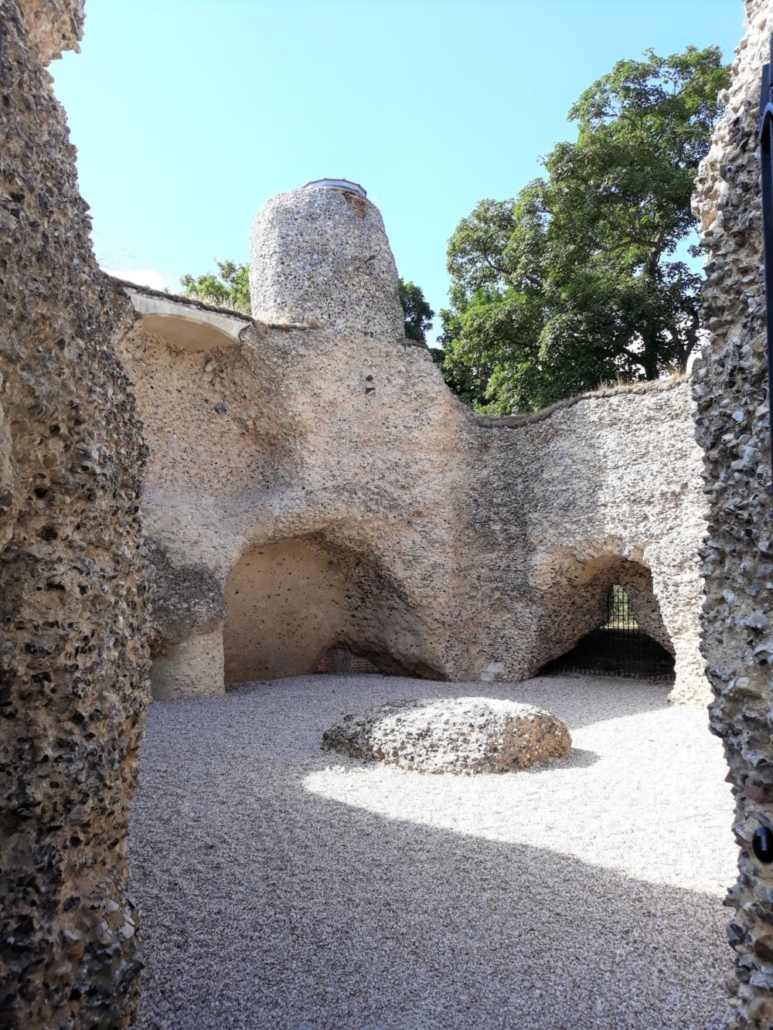Conservation & Management
Walden Castle is a Grade I listed building located upon the Bury Hill Scheduled Monument, within the Saffron Walden Conservation Area. The building and its grounds are owned and maintained by Uttlesford District Council.
In 2012 The Saffron Walden Conservation Area Appraisal proposed management actions for the conservation of the castle remains. The structure was also listed on Historic England’s Heritage at Risk Register.
In 2012 and 2019 urgent repair work was undertaken to stop unpredictable falls of masonry and the loss of important medieval fabric from the castle. This was made possible by grant funding of £410,000 from Historic England and funding of almost £450,000 from Uttlesford District Council.
The flint-rubble walls of the castle keep have now been stabilised and a soft capping has been introduced to prevent further deterioration. New gates have been installed around the historic structure and a new floor finish laid within the ruins of the keep.
At night, a new lighting system dramatically highlights the castle’s prominent position on the historic town skyline.
Visiting the Castle Remains
You can find Walden Castle in the grounds next to Saffron Walden Museum. The grounds are open at any reasonable time. The inside of the castle keep is currently closed, but you can still walk around the grounds outside of the walls and read the information panels. The nearest parking is at the Common short-stay car park or, if you are visiting the museum, there is a limited amount of parking in the grounds.




